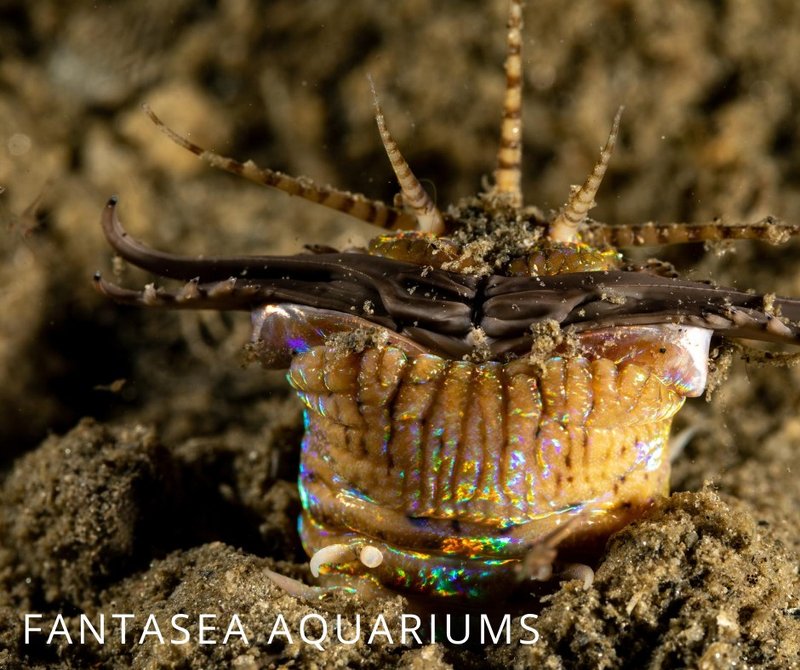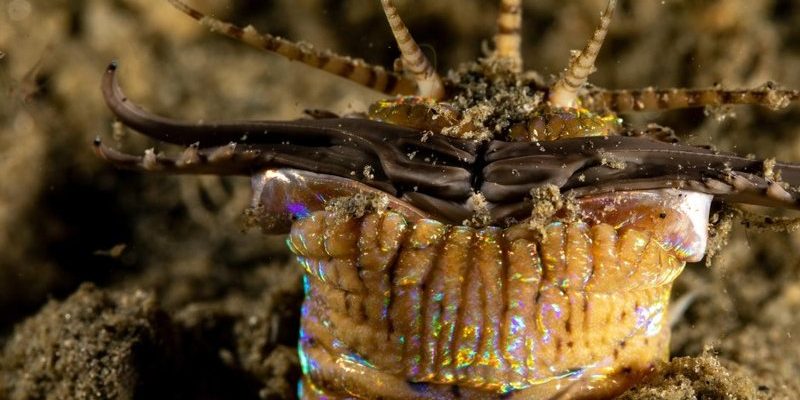
Let’s dive deeper into the world of bobbit worms. While they certainly can be mesmerizing, they come with their own set of challenges. Are they a good fit for your tank? Here’s the thing: they have specific needs and behaviors that can affect your entire aquarium. So, grab a cup of coffee, and let’s explore everything you need to know about keeping bobbit worms at home.
Understanding Bobbit Worms
Bobbit worms, known scientifically as *Eunice aphroditois*, are fascinating marine polychaetes that live in tropical waters. Their most distinctive feature is their long, segmented body, which is often brightly colored in hues of red, green, or brown. They typically inhabit sandy or muddy substrates, where they create a burrow, allowing them to ambush unsuspecting prey that swims too close.
One might compare them to nature’s own version of a hidden predator, waiting patiently for the right moment to strike. Their unique hunting method involves quickly snapping their segmented bodies out of their burrows to catch fish or crustaceans. It’s a striking sight that showcases their agility and precise movement.
But while they might look like captivating additions to your tank, these creatures aren’t always easy to manage. Their predatory nature makes them a challenge for community tanks and can lead to other fish getting eaten, which is something potential aquarium owners need to consider carefully.
Are Bobbit Worms Suitable For Home Aquariums?
When thinking about adding a bobbit worm to your aquarium, important considerations spring to mind. First off, their size and habitat needs aren’t something to overlook. A typical bobbit worm can grow anywhere from 3 to 10 feet, depending on the species and environment. Most home aquarists won’t have tanks large enough to accommodate a full-grown worm comfortably.
Moreover, they thrive in well-aerated, salty water with specific temperature requirements—ideally between 75°F and 82°F. This means your aquarium needs to mimic their natural habitat quite closely. If you’re not prepared to maintain these conditions, you could be setting yourself up for failure.
Also, consider the tank mates. Bobbit worms are known to be opportunistic predators. If you have smaller fish or invertebrates, they may become a meal rather than a companion. A community tank filled with peaceful species isn’t ideal for these worms, so you’ll need to carefully curate your aquatic family if you want to keep one.
Setting Up The Right Environment
Creating an ideal home for a bobbit worm requires attention to detail. Start with a suitable aquarium size—ideally, a minimum of 100 gallons. The more space you can provide, the happier and healthier your bobbit worm will likely be.
Here’s a quick breakdown of important setup factors:
- Substrate: Use a soft, sandy substrate to allow the worm to burrow properly.
- Water Quality: Regularly check salinity, pH levels, and temperature to ensure they remain stable.
- Aeration: Consider an air stone to enhance water movement, which mimics their natural habitat.
- Filtration: Ensure a good quality filtration system that can handle larger volumes of water and maintain clarity.
With the right setup in place, your bobbit worm will be more likely to thrive. Remember, it’s about creating an environment that closely resembles their natural habitat.
Feeding Bobbit Worms
Feeding a bobbit worm can be both fascinating and somewhat challenging. In its natural habitat, a bobbit worm catches prey that swims too close to its burrow. In your aquarium, you can replicate this by offering them a diet of meaty foods. Live or frozen seafood like shrimp or fish can be great options.
You might be wondering how often to feed them. Aim for a couple of times a week, giving them just enough to fill up without overfeeding. Too much food can lead to waste buildup, which can harm water quality—a crucial factor to their health.
Here’s a tip: consider using a feeding stick to deliver food directly to the worm. This will not only keep the tank cleaner but also help in observing their unique feeding behavior, which can be quite a show!
Challenges Of Keeping Bobbit Worms
While bobbit worms can be visually striking, they do come with a list of potential challenges. One of the main issues is their predatory nature; they can be aggressive toward smaller fish and invertebrates in your aquarium. If you’re not careful, you might wake up one day to find your favorite little fish missing.
Then there’s the challenge of their burrowing behavior. These worms are masters at hiding, and their tendency to create extensive burrows can disrupt your tank’s layout. If you have delicate corals or plants, be prepared for possible damage.
Additionally, if the water quality isn’t maintained, bobbit worms can quickly succumb to poor conditions. Regular testing of parameters like pH, ammonia, and nitrate levels is necessary for keeping them healthy.
Alternatives To Bobbit Worms
If you’re starting to think that bobbit worms might not be the right fit for your aquarium, you’re not alone. Many aquarists opt for other marine worms that are easier to care for and less predatory.
Consider the following alternatives:
- Bristle Worms: Known for being beneficial detritivores, bristle worms help maintain tank cleanliness and are less aggressive.
- Feather Duster Worms: These worms are visually stunning and filter feeders, making them less likely to disturb tank harmony.
- Sea Cucumbers: Another great option for those looking to keep a clean tank. They sift through sand, keeping it aerated and free of debris.
All of these alternatives can provide unique benefits to your aquarium while minimizing the risk of predation or disruption.
Keeping bobbit worms in home aquariums can be a thrilling idea, but it comes with challenges that should not be overlooked. If you’re willing to invest the time and effort into creating the right environment and monitoring your tank closely, these mesmerizing creatures can be rewarding to observe. However, weighing the pros and cons before making a decision is essential.
If bobbit worms don’t seem like the right fit for your setup, there are plenty of captivating alternatives that could bring vibrancy and life to your aquarium without the worry. Remember, every fish has its place in the aquatic world; finding the right one for you is key. Happy fishkeeping!

